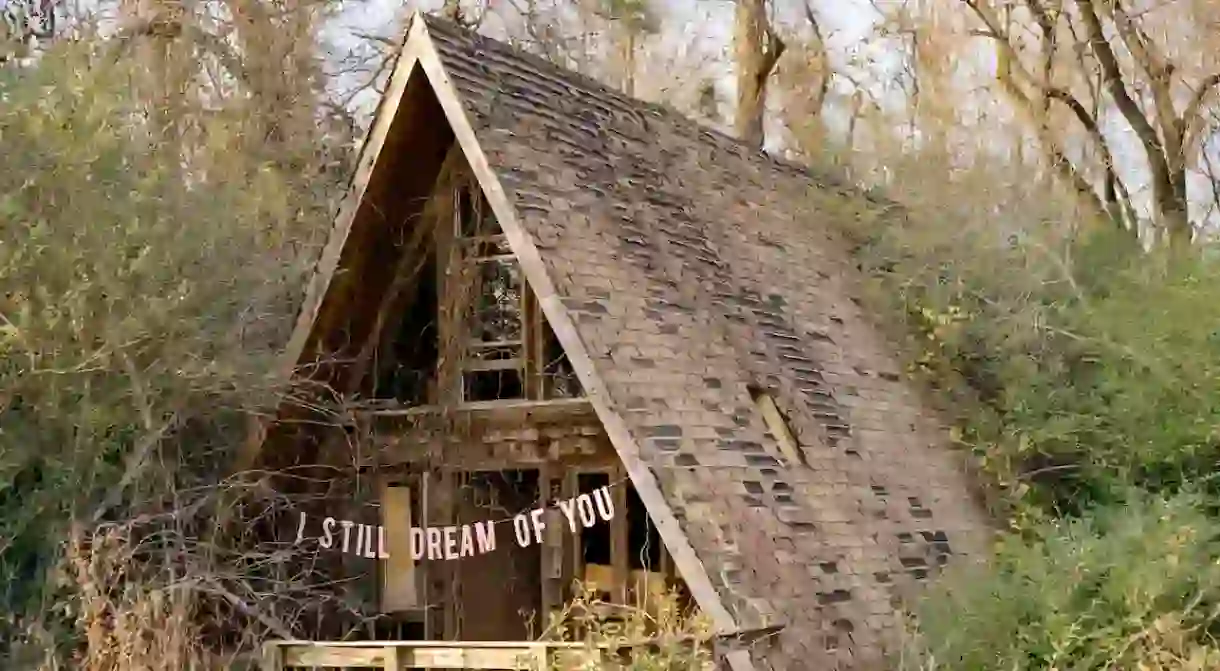These Beautiful Photographs Capture the Essence of Heartbreak

Georgia-based photographer, Peyton Fulford’s intriguing photographic series Abandoned Love is proof of how humans love to share and an example of what happens when an artist relinquishes complete control in the creation of art.
Since she was 10, Peyton Fulford was destined to be a photographer. She would always have her camera with her, taking photographs when she was hanging out with her friends. When she got to college she realised she could actually have a career in photography and begun to take her creation of visual images more seriously.
Now 22, Fulford is in the last year of her BA in Photography at Columbus State University and has already made an impression with her raw and evocative photographic style, garnering editorial coverage from i-D, AnOther and the British Journal of Photography to name but a few.

Shooting on a medium-format Pentax, Fulford creates extremely immediate visual documents of life, capturing the essence of a specific moment. Whether it’s photographing her friends for her ongoing series Infinite Tenderness, to crowdsourcing material for Abandoned Love, Peyton explores the acts of intimacy and the creation of identity.
We caught up with Fulford to talk about her remarkable ongoing series Abandoned Love in which strangers from around the world send their personal writing or text messages for her to visually interpret. Here, reality merges with fiction as statements are taken out of context to enliven and reimagine abandoned locations in America. While at the same time revealing the importance of participatory involvement from the public at shaping the art and ultimately the universal power of love.

Culture Trip (CT): Where did the idea for Abandoned Love come from?
Peyton Fulford (PF): I started my Abandoned Love series in 2015. At the time, I was learning about participatory art and how the the audience interacting with and experiencing the art was what becomes the true object or subject of the work. I studied the work of Miranda July, Harrell Fletcher, and Klaudija Visockyte. Specifically, Miranda July and Harrell Fletcher’s ‘Learning to Love You More’ project introduced me to the participatory aspect of art and the beauty of not being so in control of your artistic process. I think the part of their project that interested me the most was their ability to have so many people share such private moments in a public space.

Whereas with Klaudija Visockyte’s ‘Please Don’t Leave Me’ series, she took a completely different take and shared private thoughts in a private space, but then shared her images online in a public realm. I was interested in how her images have the presence and absence of a person; the text seems to act as the live subject. All of these artists influenced the ways in which I approached my own series.

CT: How important is the location that you shoot in?
PF: The landscape of Georgia has been influential on the series. When it comes to choosing a specific location for an image, I am critical of where and what time of day I shoot. It also depends on the type of space I visualize for a specific phrase and how the words interact with the environment.

CT: How many requests do you get? Have any been outrageous or exceptional?
PF: I have received hundreds of submissions from over 30 different countries. The phrases differ according to how the person translates love and melancholy to their own life experiences. Many submissions are heartbreaking because they are so relatable. Some making me cry and others make me laugh, but the ones that sadden me the most are the suicide notes from people that attempted to end their own life.
CT: What inspires you?
PT: Everything! Smelling, hearing, touching, seeing, tasting the world around me.
See more of Peyton Fulford’s work on her Instagram account.













